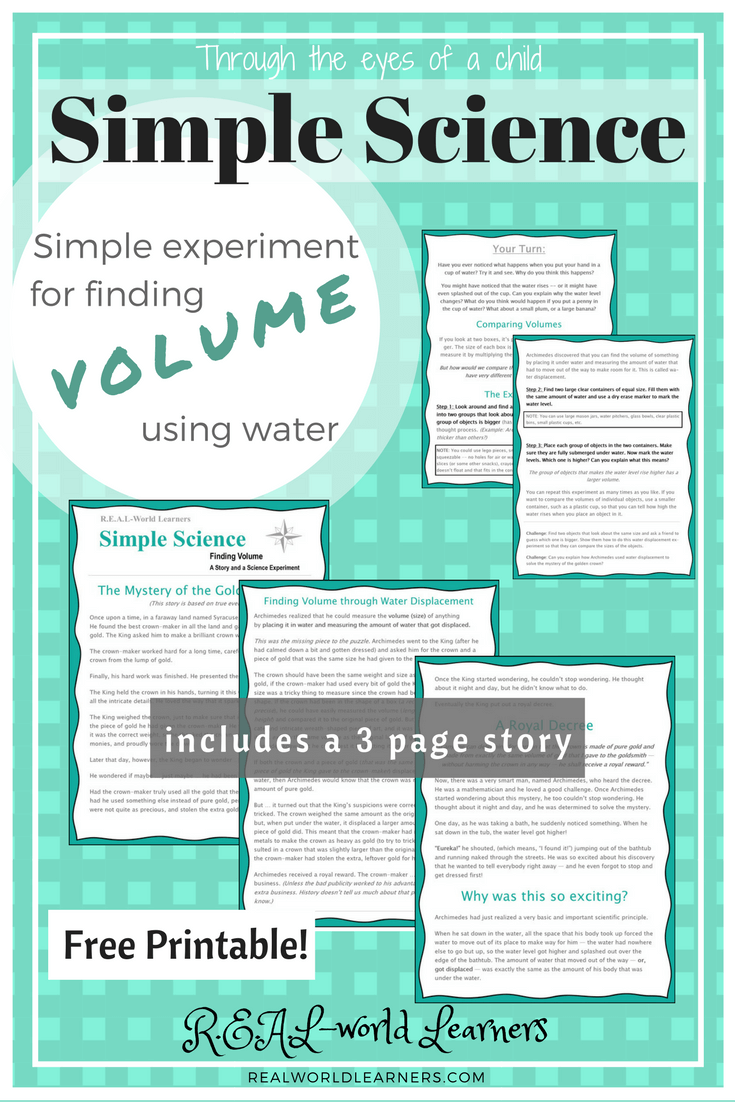
Spontaneous Discovery about Volume
This post follows up on my previous post. You can read it here.
N had accidently discovered a fundamental principle of science — measuring volume and comparing sizes of unusual shapes through water displacement.
I told him the story of Archimedes and the mystery of the golden crown. (You can read it in the previous post, or in the free printable linked at the end of this post.)
We did a simple experiment with a plum in a cup of water, but it left N un-impressed and me discontent. The teacher in my head wants to create learning moments out of everything … sometimes I have to convince her to let things go ;), but this time I knew I could figure something out. I wanted to prepare a scenario for N that would present a genuine and intriguing question — one that wouldn’t have an easily apparent answer.
So I looked around the house for some small toys. (Ha, that didn’t take long!)
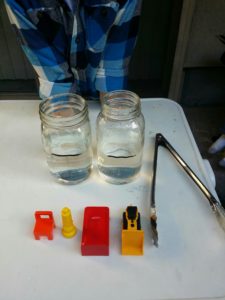
Comparing Volumes
I knew that, with my preschooler, talking about weight and density was too complicated, but I figured we could at least talk about volume. I also knew that answers make more sense when they come from genuine questions, so I wanted to introduce some kind of question that would stretch his understanding of the ways things work — that way the plain ole’ fact that we can measure volume through water displacement would turn into an authentic discovery with a “hook” into his mental framework of science.
I lined up several objects and asked him to put them in order from the smallest size to the largest size.
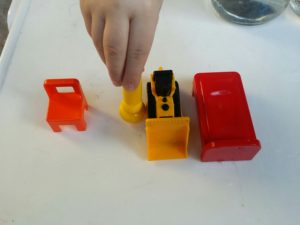
He was perfectly confused. (I say “perfectly” because I wanted him to struggle just a little bit while thinking through this.)
“This toy is bigger this way (taller) but it’s not as much around (skinnier). So I don’t know if the chair or the yellow thing is bigger.”
I asked him how he could figure out, but he wasn’t tracking enough to know how to answer that. So I asked him to put the orange chair in the water.
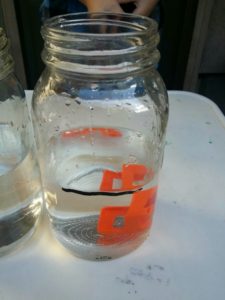
Unfortunately, I hadn’t made the best choices about toy size and water amount; the water level only rose a tiny bit and I knew it would be difficult to make my point with data that was hard to measure. 
So I changed the question. 🙂 I lined up four of the little pegs (not sure what they’re called) on one side and put 3 small toys on the other side. Then I asked him which group he thought was bigger. (Measuring the relative volumes of the individual pieces was not going to work out so well.) He was sure that the tower of pegs was bigger than the group of 3 toys, (probably because it was taller).
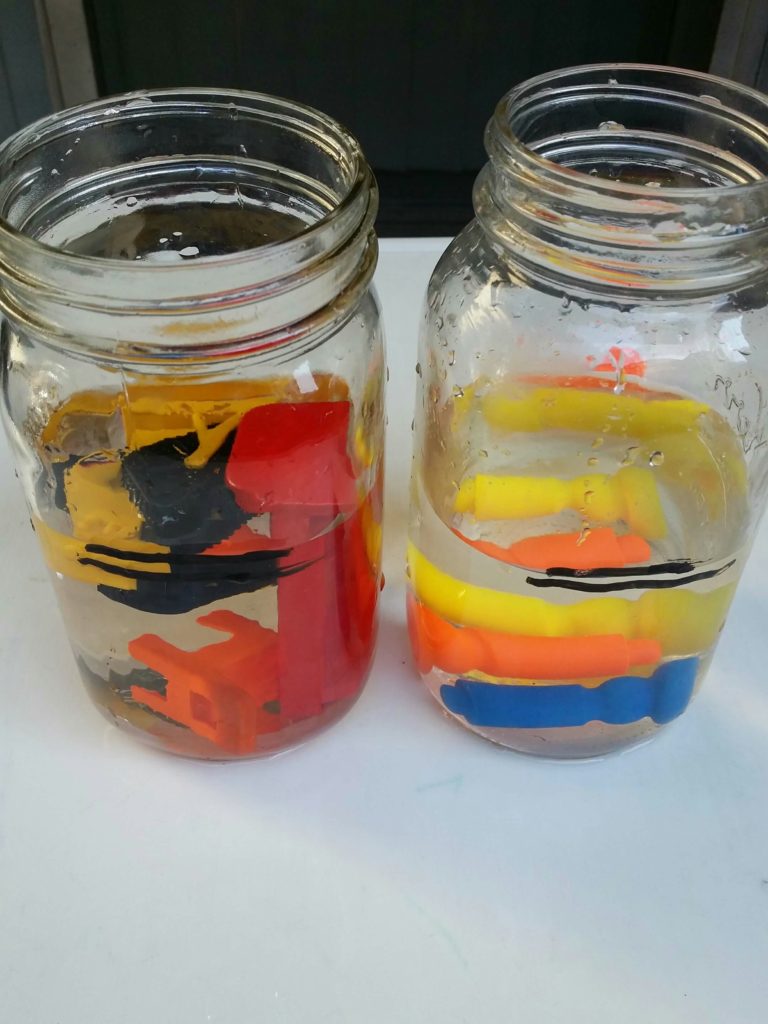
After he put all the toys under water (in their two separate mason jars), we measured the amount of water displacement by marking a new line that measured the water height. It was actually quite similar, but I wanted one group of objects to have a distinctively larger volume than the other, so again I changed the question. I took one of the pegs out and we re-measured the new water heights.
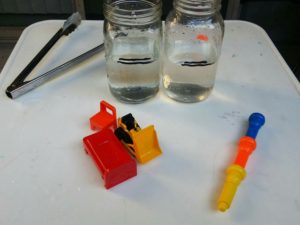
His conclusion about volume
He originally thought that taller group (the three pegs) would be bigger than the group of three small toys. When we measured the level of water displaced, however, the pegs made less water move out of the way than the other toys. So the total volume (size) of the group of small toys was actually greater than the volume of the three pegs.
In a nutshell: You can measure the size of an object by measuring how much water it displaces.
Magnification
He ran into a couple other scientific principles in the course of playing with the toys and water.
He was surprised to see that the plum and the toys looked bigger when they were in the water. I explained briefly that the water was magnifying the objects, making them look bigger than they actually were. The water was acting like a magnifying glass.

I didn’t try to get into the “WHY” of this one … and he didn’t ask. We may come back and revisit this topic later.
Density
We couldn’t leave this topic without at least acknowledging the role that density plays in the volume and weight equation.
I gave N a wooden Jenga block and a plastic toy. He tried to put them both underwater but no matter how hard he kept pushing, the wooden block kept bouncing back to the top.
We talked about how the wood floated but the plastic chair sank. I asked him to think about a few other things that could float or sink.
We were losing momentum though, and I think this conversation deserves a whole science experiment in itself, so I decided to come back to this one again later.
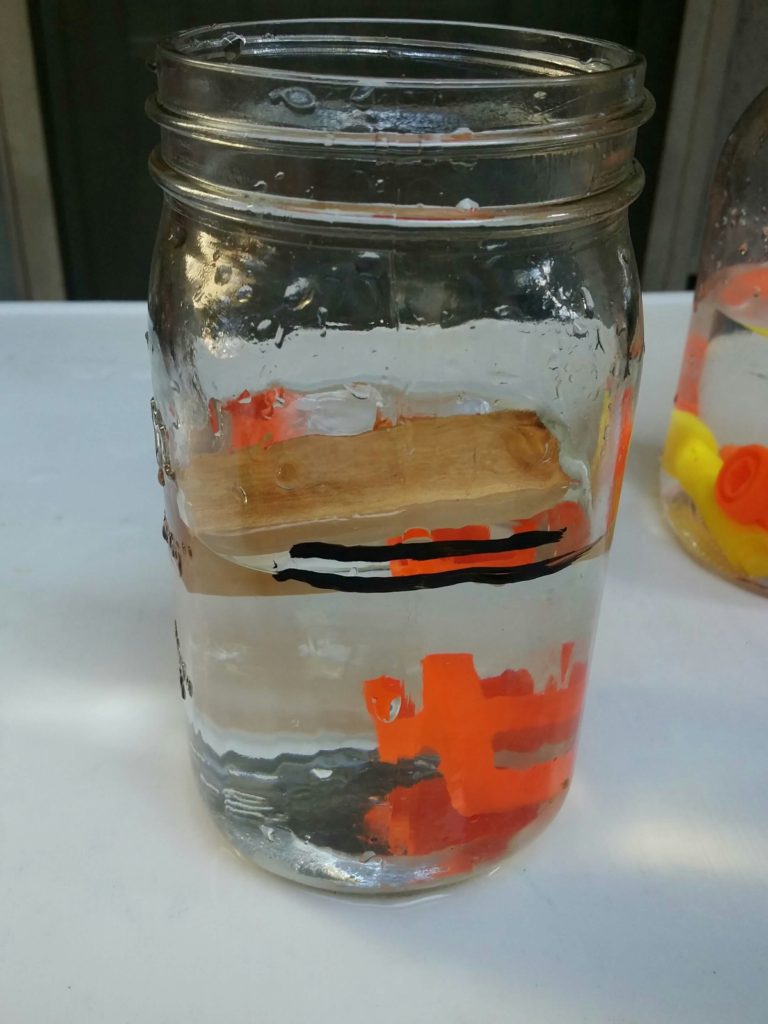
Spoiler alert: Things that float are less dense than water; things that sink are more dense than water. 🙂
Water Displacement, Magnification, and Density
Our science experiments today were, admittedly, a bit haphazard and spontaneous — but I think he got a pretty good introduction to some solid science vocabulary :).
Free Printable
Based on our conversations, I’ve made up a (much more organized) free activity sheet for you to use with your own kids — it includes the full story of Archimedes and the golden crown. You can download it for free from my TPT store.
Here’s a preview of the full printable:
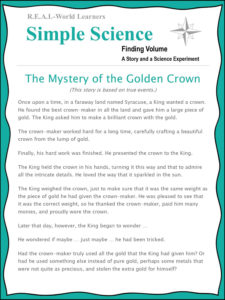
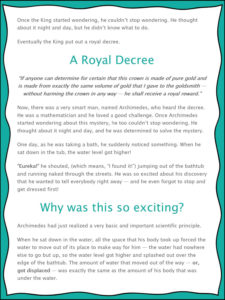

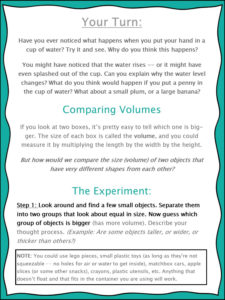
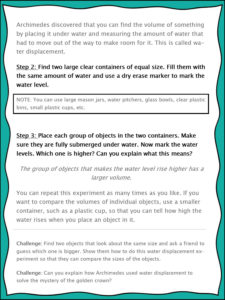
Get your free copy here and enjoy doing a little science and math with your kids today! 🙂
Learning Resources for Teachers, Tutors, and Parents
If you’d like to visit my store to see my library of learning resources (focused on Pre-K – 3rd grade Math, Reading, and Writing, and High School Algebra and Geometry), you can check it out here:
https://www.teacherspayteachers.com/Store/Sandra-Balisky

So fun! What a neat experiment!
Thanks! And thank you for visiting and leaving a comment 🙂